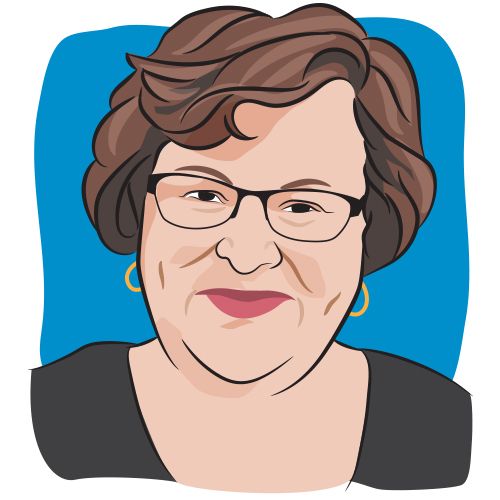News
Article
Breyanzi Cost Effective As Second-Line R/R DLBCL Treatment
Author(s):
Researchers have found the CAR-T cell therapy Breyanzi (lisocabtagene maraleucel) to be a cost-effective second-line treatment for patients with relapsed and refractory diffuse large B-cell lymphoma as the drug’s cost rises.

CAR-T cell therapy Breyanzi (lisocabtagene maraleucel) has been found by researchers to be a cost-effective second-line treatment for patients with relapsed and refractory diffuse large B-cell lymphoma (r/r DLBCL).
Researchers analyzed data from a hypothetical cohort of patients with r/r DLBCL, age 60 and 57% of whom were male — following the demographic profile of the TRANSFORM study which was the basis of the Breyanzi’s approval by the Food and Drug Administration (FDA) — who relapsed within a year of initial treatment.
The respective data determined that the incremental cost-effectiveness ratio (ICER) of Breyanzi was $99,669 per quality-adjusted life-year (QALY) from a healthcare perspective and $68,212 per QALY from a societal perspective, according to study findings published in Blood Advances.
The ICER, as explained in a news release regarding the study issued by the American Society of Hematology, is an evaluation of the additional cost required per QALY gained by a patient and assumes a social willingness to pay up to $100,000 per QALY.
Patients treated with Breyanzi, it was determined, experience an average life expectancy of 5.34 years, gaining 3.64 QALYs, versus a life expectancy of 2.47 years and a benefit of 1.62 QALYs for patients treated with the standard care regimen of chemotherapy and autologous hematopoietic stem cell transplantation.
“This study demonstrates that CAR-T cell therapy is worth considering as a second-line treatment for r/r DLBCL,” senior study author Dr. Mohamed Abou-el-Enein, an associate professor of medicine at the Keck School of Medicine at the University of Southern California, said in the news release. “When deciding on what therapies to use in clinical practice, I think it is important that we do not shy away from these therapies solely because of their list price. We must keep our patients front and center in these decisions and continue to have conversations about how we can lower the price of CAR-T cell therapy and increase patient access to this life-saving treatment.”
Researchers analyzed direct medical costs including CAR-T cell therapy procedures, chemotherapy, stem cell transplantation, hospital admissions, monitoring, disease progression management, end-of-life care and side effect treatment, as well as societal costs such as productivity loss and travel expenses, as detailed in the study.
"In our study, we incorporated the often-overlooked societal costs associated with cancer treatment, which are typically neglected in cost-effectiveness analyses that focus solely on the healthcare sector related-expenses," Abou-el-Enein said in the news release. “Cancer treatments can diminish quality of life, causing work absences and challenges in managing everyday activities, especially among the elderly. Treatments that improve quality of life not only benefit the patient but also reduce these broader societal costs, which is an important aspect of our cost-effectiveness evaluation."
Looking further out, researchers found that with a five-year horizon Breyanzi would have an ICER of $84,075 per QALY from a societal perspective but climbing to $136,757 from a healthcare perspective, “suggesting that while (Breyanzi) is not cost-effective at this level, it still remains within the acceptable range below the $150,000 per QALY threshold,” according to the study.
“Notably, the five-year ICERs are not substantially different from those calculated over a lifetime horizon in our base case scenario,” the researchers wrote. “This suggests the potential for CAR-T cell therapies to maintain their value over time, regardless of the time frame used for the cost-effectiveness analysis.”
Breyanzi was approved by the FDA for patients with previously treated DLBCL in 2022. Since then, the cost of the drug rose by 9% from $410,300 in 2022 to $447,227 in 2023.
Cost remains an issue for cutting-edge treatments such as CAR-T therapies; a recent study published in Annals of Internal Medicine of high-risk patients with DLBCL determined that “costs of CAR-T must be lowered substantially to enable cost-effectiveness,” while research on patients with follicular lymphoma (FL) from Blood Advances found that “under current pricing, CAR T-cell therapy is unlikely to be cost-effective in unselected patients with FL in the third-line setting.”
“These therapies are expensive — and we're not talking about $5,000 or $10,000 therapies, we're talking about hundreds of thousands of dollars,” Leukemia and Lymphoma Society chief scientific officer Lee Greenberger said during an appearance on CURE®’s Speaking Out® video series. “Some of that the government is going to have to pay, some insurance is going to have to pay, but some of it the patients are going to have to pay as well. And the price tags are going to be significant. How are we going to manage that?
“So, that's clearly an unmet need as we develop all these sophisticated therapies: Who's going to pay for them? And how do we justify the cost? I can tell you that even these therapies, the-so called CAR-T therapies, these immunotherapies, these can cost $400,000 to $500,000 a year.”
“One dose can be curative in a patient who has had multiple relapses. And now what we're seeing is you can use the so-called immunotherapies, these CAR-T therapies, earlier on in patients, perhaps even in high-risk patients as frontline therapy,” Greenberger continued. “Can you use a $500,000 therapy as frontline therapy saying, 'This is going to be a cure?' Well, you might be justified in doing that, because if a patient has to go through five or 10 years of therapy, it's going to come out the same result, but (with) a lot of strife along the way, as opposed to a one-time therapy. So, you can see that these expensive therapies might be justified in the right patient, we're going to have to prove that in the next years head.”
For more news on cancer updates, research and education, don’t forget to subscribe to CURE®’s newsletters here.




